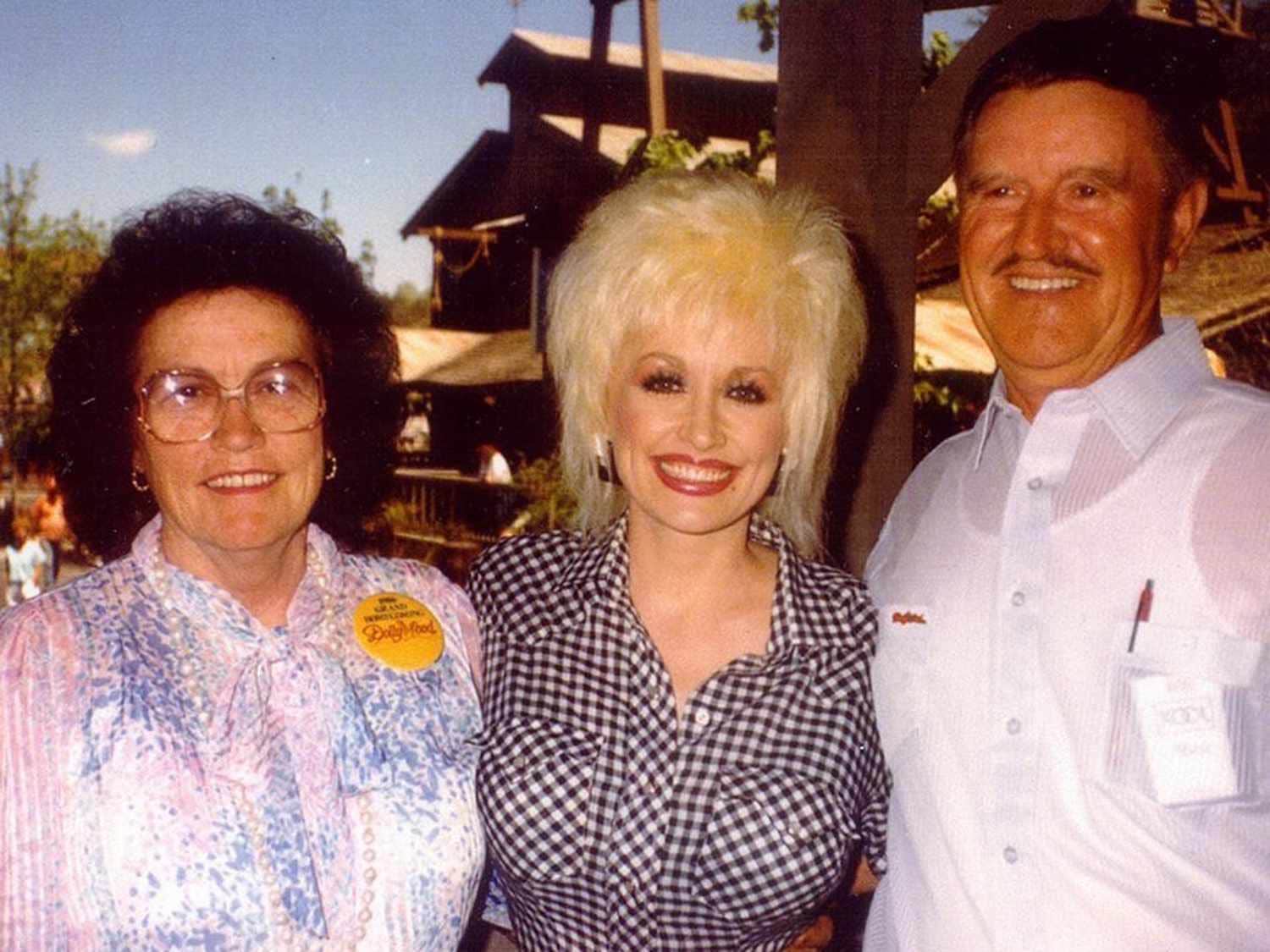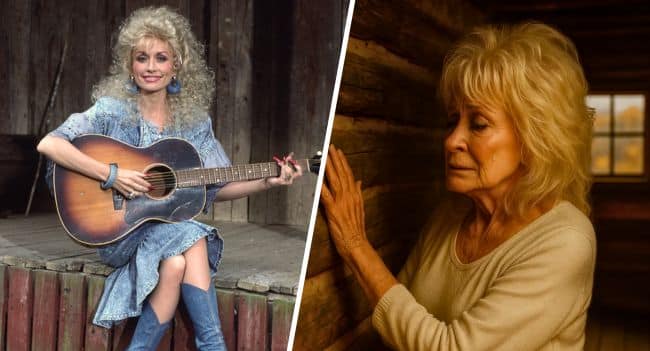No red carpet. No cameras. No entourage. Just Dolly—returning home.
Before she became a global icon, a country music queen, and a household name, Dolly Parton was just a barefoot girl with big dreams, growing up in a tiny one-room cabin in the heart of Tennessee’s Smoky Mountains. That cabin, weathered and worn, was where she first sang to the rhythm of the crickets and learned the power of faith, family, and music.
Her father patched the cabin’s walls with whatever scraps he could find. Her mother filled the space with stories, songs, and the kind of warmth that made poverty feel a little less cold.
Glitter, Gold… and a Quiet Return
Dolly’s voice would one day carry her from local radio stations to sold-out arenas, from backwoods porches to global stages. But even as sequins replaced hand-me-downs and tour buses replaced dirt roads, the little cabin in the hills never left her heart.

And this summer, at 79, she came back. Not for a film crew. Not for a feature. Quietly, alone.
She parked her car and stepped into the past—into the same four walls her father once patched with love. She touched the wood. Stood in the spot where her mother used to sing by the window. In that still moment, the noise of fame fell silent.
With tears on her cheeks, she whispered:
“I spent my life chasing glitter and gold… only to realize the true treasure was always here, in these silent mountains.”

The Song That Grew From Those Hills
That return home echoes through her 1973 classic, “My Tennessee Mountain Home.” It’s more than a song—it’s a tribute, a time capsule, and a map back to her roots.
She sang about honeysuckle on the breeze, the creak of a porch swing, and the kind of peace you only find where love was planted deep. The song continues to resonate because it doesn’t just tell her story—it reminds us of our own.
Final Note
Fame never pulled Dolly from her roots. It only made her hold them closer.
Because no matter how far you go, the most important songs—the ones that shape your soul—are the ones that lead you home.






